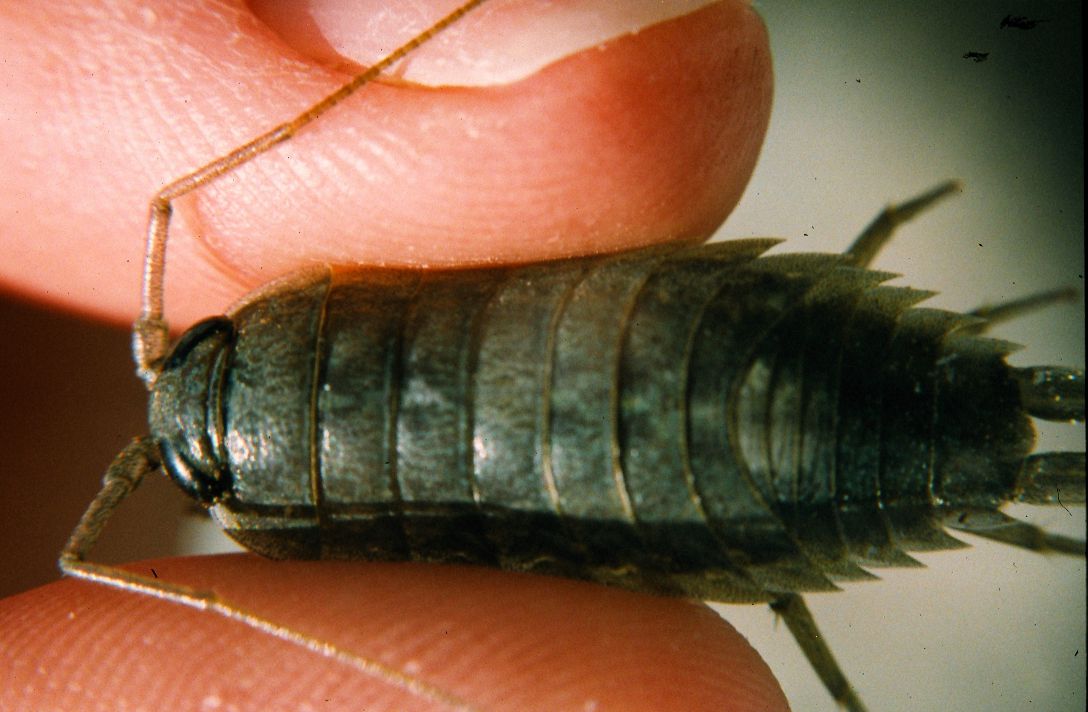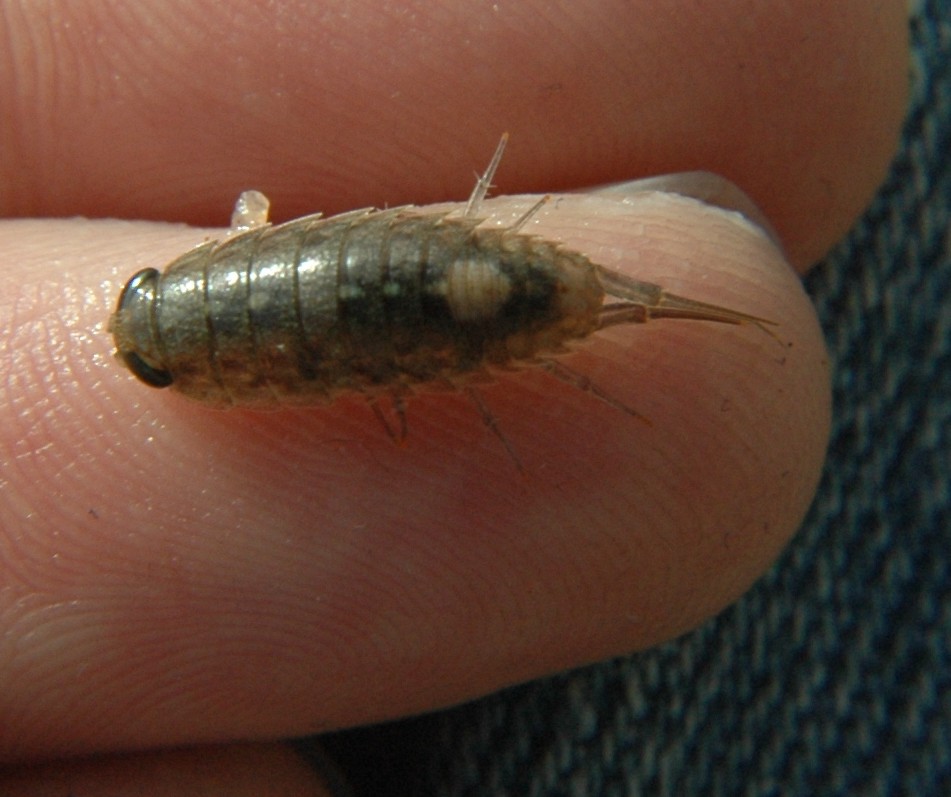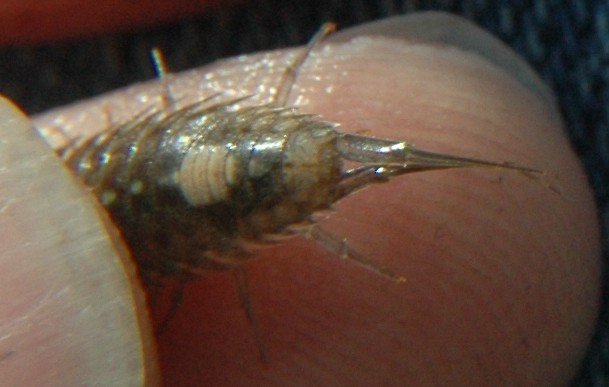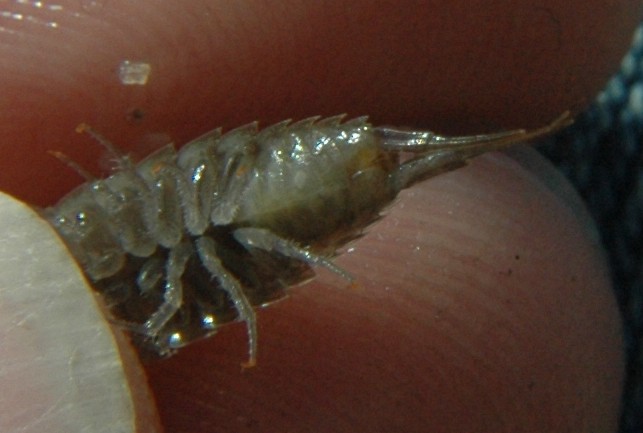Ligia (Megaligia) occidentalis Dana, 1853Common name(s): Rock louse |
|
| Synonyms: |  |
| Phylum Arthropoda
Subphylum Crustacea Class Malacostraca Subclass Eumalacostraca Superorder Peracarida Order Isopoda Suborder Oniscoidea Family Ligiidae |
|
| Ligia occidentalis from Dana Point, CA | |
| (Photo by: Dave Cowles, April 1997) | |
How to Distinguish from Similar Species: Does not get as large as Ligia pallasii, plus the very long uropods (trail out of the picture above) are nearly half as long as the body, while in L. pallassi they are much shorter.
Geographical Range: Sonoma County, CA to Central America.
Depth Range: Intertidal
Habitat: Rock crevices or under stranded Macrocystis algae in the high intertidal during high tides; ranges through intertidal at evening, especially at low tide.
Biology/Natural History:
Hides most of the
day in crevices or under stones just above the high tide
line. At
night and at low tides in cool weather, forages throughout the
intertidal
zone. Is a scavenger, plus feeds on microscopic
algae. This
species is nearly terrestrial--it must keep its gills moist (by dipping
the back of its abdomen into the water) but will drown if forced to
stay
underwater. This species is very tolerant to water
loss. They
are paler at night than during the day due to clustering and dispersal
of chromatophores.
Animals on dark backgrounds remain darker than do those on light
backgrounds.
Ovigerous females have been observed at Monterey Bay in March, May, and
June.
| Return to: | |||
| Main Page | Alphabetic Index | Systematic Index | Glossary |
References:
Dichotomous Keys:Kozloff 1987, 1996
Smith and Carlton, 1975
General References:
Kozloff,
1993
Morris
et al., 1980
Niesen,
1994
Scientific Articles:
Eberl, R., 2010. Sea-land transitions in isopods:
pattern
of symbiont distribution in two species of intertidal isopods Ligia
pallasii and Ligia occidentalis in the
Eastern Pacific.
Symbiosis 1:1 pp. 107-116
Eberl, R., 2012. Distribution, habitat and food preferences of sympatric high intertidal isopod species, Ligia occidentalis and Ligia pallasii (Ligiidae: Oniscidea). Journal of Natural History 46: pp 29-30
Hurtado, L.A., M. Mateos, and C.A. Santamaria, 2010. Phylogeography of supralittoral rocky intertidal Ligia isopods in the Pacific region from Central California to Central Mexico. PLOS One 5:7 e11633
Markow,
T.A. and E. Pfeiler, 2012. Mitochondrial DNA
evidence for deep
genetic divergences in allopatric populations of the rocky intertidal
isopod Ligia
occidentalis from the eastern Pacific. Molecular
Phylogenetics
and Evolution 56: pp 468-473
General Notes and Observations: Locations, abundances, unusual behaviors:

Here is another, small individual from Little Corona del Mar, CA.
 |
 |
Authors and Editors of Page:
Dave Cowles (2005): Created original page